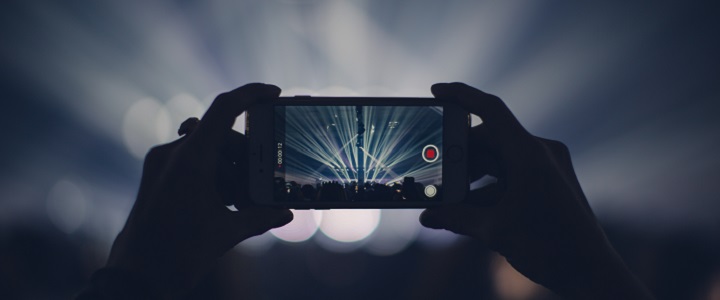
(Part two of Naive Art for Educational Media)
Have a vision for your project. Is it a high concept, short and artful film, or are you wanting to provide practical information? Instructor or topic introductions, how-to instructions, and concept explanations can be effectively produced with lower production values, less time and cost if a few simple guidelines are considered.
Assess your resources
If you have an in-house production team, take advantage of their skill, knowledge, experience and access to equipment and software, especially if high production values are needed.
If you don’t have concierge-level support for your media projects, determine if training is available for a do-it-yourself approach. We have a new Ed Media program at Douglas College that does exactly this. There are also video-tutorial courses on Lynda.com to help get up-to-speed with pre-production, production and post-production tasks for media projects.
If you have little time for planning with experts or training opportunities, all is not lost. You can resort to a naïve art approach to video and audio recordings. Well, maybe not too naïve, as you’ll see from the following suggestions.
Plan
Think about your project from many different angles.
- What are the most important elements for communicating your message to your audience?
- How can you best incorporate those elements, and reduce unneeded elements? (e.g. nice-to-know information, video where audio would do, too much information)
- How can you minimize distractions? (e.g. extraneous noise, cluttered backgrounds, poor lighting)
- How succinctly can you express your thoughts? An edX study reports that optimal video length is 6 minutes or shorter. And, “…the average engagement time of any video maxes out at 6 minutes, regardless of its length.” Optimal Video Length for Student Engagement
- What is the best fit with the hardware and software available to you that you feel comfortable using? (E.g. a smart phone camera or a HD video recorder, free editing software or a professional editing suite…)
Optimize what you have
Audio
Good quality audio is essential, and can save an otherwise mediocre video. In the case of audio-only recordings, it is essential that the volume, clarity, and absence of extraneous noise are carefully attended to. Correcting audio after recording is not a good strategy. Make sure to use a good quality microphone. Here are a few suggestions:
- A built-in microphone on a good quality smartphone might work fine for some purposes. Test it out first!
- Obtain a good quality plug-in microphone for your smart phone or tablet.[i] If you can’t rent or check out suitable equipment, consider buying:
- A lavalier microphone: works well for a single speaker if positioned correctly. Turning the head away from the microphone may result in poor quality. Consider spending $35.00 for an entry-level microphone like VidPro XM-L
- A multi-pattern microphone: there are a few good choices for iOS; not much for Android right now. We’ve had some good luck recording multiple speakers with a Shure MV88 ($189.00) with an iPhone.
- The Blue Yeti USB microphone ($180.00) is Mac and PC compatible and well-suited for voiceovers, interviews, field recordings, conference calls, podcasting, vocals, and musical instruments.
Video
- The cameras in modern smartphones are capable of producing fine quality video recordings. Several factors will help get the most out of these cameras:
- Stability: use a tripod with a phone mount. The flexible-leg types can be used alone or attached to other surfaces for more height or perspective.
- Light: Make sure that the subject is well-lit, not in shadow, free from glare. Use natural or artificial light.
- Setting and Framing: Pay attention to what is in the background and surroundings. Does it contribute or detract from the intended communication?
- For more tips, see https://www.edutopia.org/discussion/low-budget-high-quality-videos-flipped-classroom
Expertise
- If you break what you know down into manageable chunks, you can speak to a topic for a few minutes without the need of a script, lengthy practice, or awkward pauses while you think of what to say next. Bonus: students appreciate to-the-point expressions of new knowledge, not 45 minute long recorded lectures.
- Record your network connections: If appropriate, consider recording audio or video interviews and conversations with experts in your field. You might even consider setting students up to interview an expert. Make sure to get signed permission forms for audio and video recordings of others.
Some Considerations
- Students are increasingly accessing online content on mobile devices. It is relatively easy to engage with audio or video content compared to text content on small screens.
- Creating audio and video recordings for course content, and asking students to do something similar for assignments can help humanize the online environment, provide multiple sensory inputs for understanding a difficult concept, and multiple means of representation. All of these are well-researched benefits for increasing learning opportunities.
- Some ways instructors use recordings:
- Voice-over PowerPoint presentation
- Voice-over screen capture (e.g. annotating a document, providing audio feedback, explaining how to set up an Excel worksheet, etc.)
- Voice-over video of field trip or site visit
- Classroom lecture capture
- Interview or dialogue with a guest expert
- Introduction to a program, course, the instructor, or individual modules
- Assignment instructions
- Podcast-style on a topic
- Audio feedback for submitted assignments or tests
- Some ways instructors have students use recordings:
- Virtual classroom presentation
- Voice-over assignment submission
- Reflection on field trip or site visit
- Discussion Board posts
- Mock interview with a peer
- Response to questions
[i] http://www.phonearena.com/news/Five-great-external-microphones-for-iPhone-and-Android_id82907

Leave a Reply